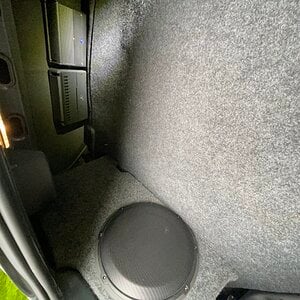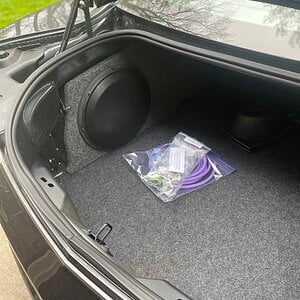- Thread Starter
- #16
Ok, so when I say the cone doesn't shift around I suppose that isn't technically true, while it moves up and down freely, any side-to-side movement is probably no more than a few thousands of an inch...if that.But they absolutely do, and the wiggle room you have in the magnetic gap is only a few thousandths of an inch tolerance before you wind up in trouble. I personally wouldn't even bother trying to repair a stock speaker at all, but it's quite easy to misalign a coil when repairing/replacing a surround and short of replacing the surround again or pulling it up and re-gluing there's no fix.
That said, the coil former may be cracked/bent/damaged somehow and then even if it were aligned true you'd get rubbing and if the triple joint were failing (where the coil former, cone, and spider meet) or if the spider were separating from the frame or tearing that would also cause buzzing at any excursion.
It may have been instructional to test the speaker at low volume with the ruined surround removed to see if it weren't something else wrong.
While I saw some tutorials about doing shims for general speaker repair, none of the videos I found that discuss repairing car speakers like this, nor the instructions sent from the people I bought the repair kit from mention any need to shim.
Here are some example videos:
Now I did find another video just searching here where he appears to do a shim on a car speaker:
His speaker doesn't look exactly like mine...he rips off the piece covering the voice coil and apparently his repair kit came with another replacement cap to put on top of mine did not. This is what I ordered:
And the instructions came with no mention of having to line anything up with shims.
So I just want to be sure that you are saying that if I refoamed it without shims, it is entirely possible that the vibration I am still getting is because I didn't shim when I did it?
If that is the case, it may be worth me trying my hand at it one more time as the cost and all issues from replacing would be much less if I can do this.
thanks


